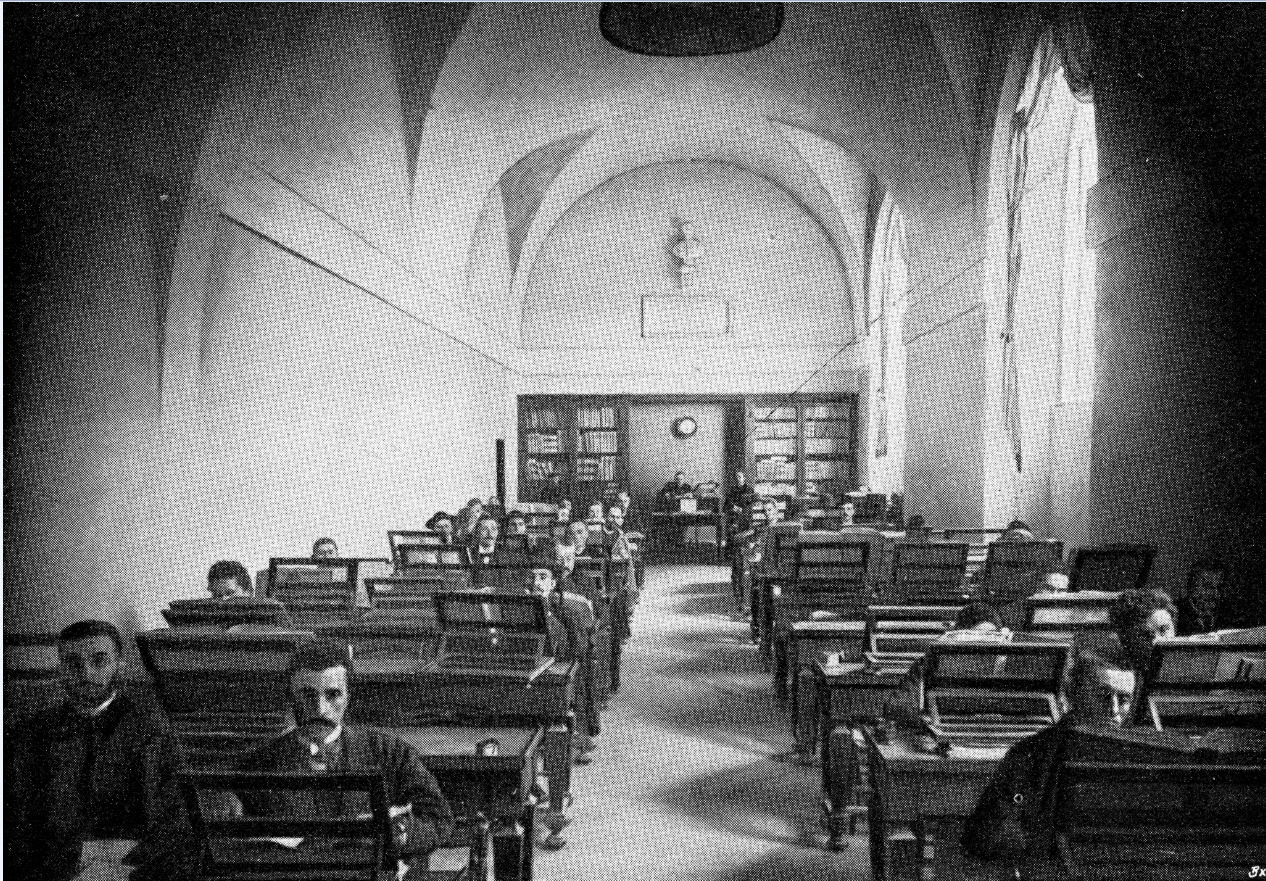The ice-cold reading room of the Vatican Secret Archives
At the beginning of 1881, the archive room set up by Cardinal Joseph Hergenröther was opened to the scholarly public. It is located in the wing of the building by the Torre dei Venti on the side of the Vatican Gardens. The sloping terrain of the Vatican Hill from the gardens to the east gives the room its special ambience.
Walter Friedensburg describes the room as a rather modest, sunless, damp and cold room with a stone floor, facing east below street level. The room still accessible to archive users today, in which the files are issued (Sala Pio XI), is located on the ground floor on the western narrow side of the Cortile della Stamperia (then also called, as today, Cortile della Biblioteca). As this courtyard was even lower at the time, it was damp and cold.
The hall only has windows facing the inner courtyard, i.e. to the east. Depending on the weather, the strenuous work on uncomfortable chairs is exhausting. Quite a few even fall ill due to the unhealthy and unhygienic conditions. Friedensburg vividly describes how, in winter, ‘the user with his hat on his head, wrapped up in a coat or fur, his feet tucked into a fur-lined footmuff, froze to the bone despite everything’.
But after just a few years, as Ehses writes in a splendid volume on the Vatican, the archive room was no longer sufficient for the large crowds, and so Leo XIII, ‘best advised by Cardinal Hergenröther’, had an additional, more spacious room built right next to the previous study room, which was opened on 9 November 1890. The hall is not more spacious in terms of its floor space, but only because there are no wall shelves and therefore more tables can be set up. It is the Sala Leone XIII, today the Sala Indici, as this is where the finding aids are kept. The room is located directly on the Vialone del Belvedere and is at ground level with the street, making it less humid. It also has a wooden floor to keep out the cold and three large windows facing the Vatican Gardens (to the west). The elongated room is furnished like a school classroom with two rows of ten desks each, totalling 60 workstations. The two custodians sit at the head ends, slightly elevated.
But the new archive room and the consultation library are also unheated, so that the fingers get stiff. Ehses later suffers from gout, and Domarus will not have been the only one plagued by rheumatism: ‘the peculiarity of the southern winter is that the cold is much more difficult and troublesome for people than in the cold north’. Merkle caught a catarrh in the cold workrooms of Bologna, which later plagued him again, ‘and even his iron energy could no longer hold out’. It was not until the Holy Year of 1900 that the archive hall was fitted with tube heating.

About the pictures: the first picture shows the hall in 1881: you can see the Dominican Heinrich Denifle, who was very close to the Görres Society. All visitors to the archive are dressed warmly: with coats and hats! Today it is the Sala Indici.
The second picture shows the room from 1890, where the gentlemen are already sitting in their bare suits, apparently because it is warmer or because the photo was taken in summer. It is still the room where the manuscripts are handed out today.
Historical photos of the rooms are to be found in the recent catalogue of Fleischer "Souvenirs de Babel".
The video of the press conference on the 140th anniversary of the Palaeography School and School of Biblioteconomia also shows a series of historical photos.
- Details
- Written by: Stefan Heid
- Category: Roman notes
 Römisches Institut der Görres-Gesellschaft
Römisches Institut der Görres-Gesellschaft







